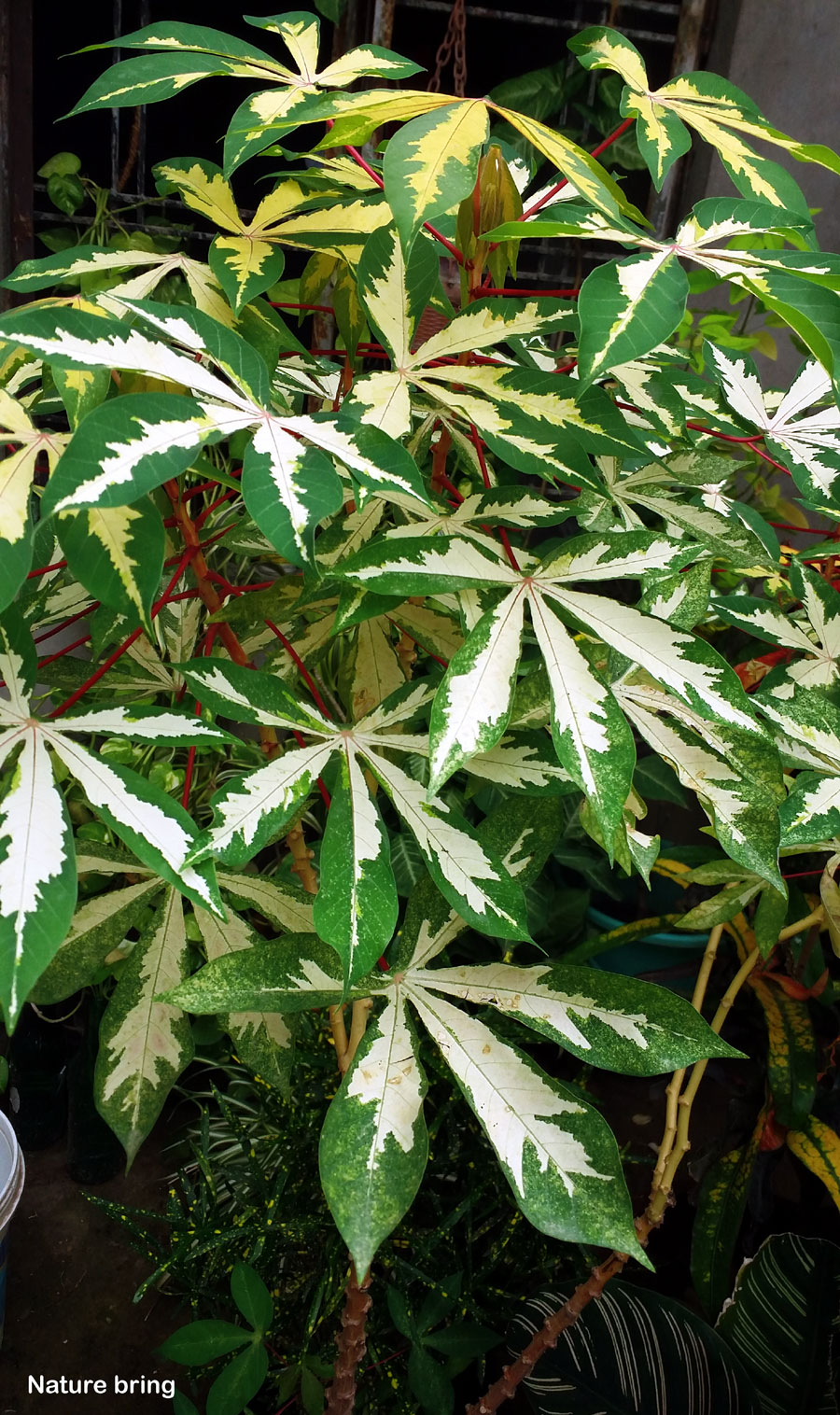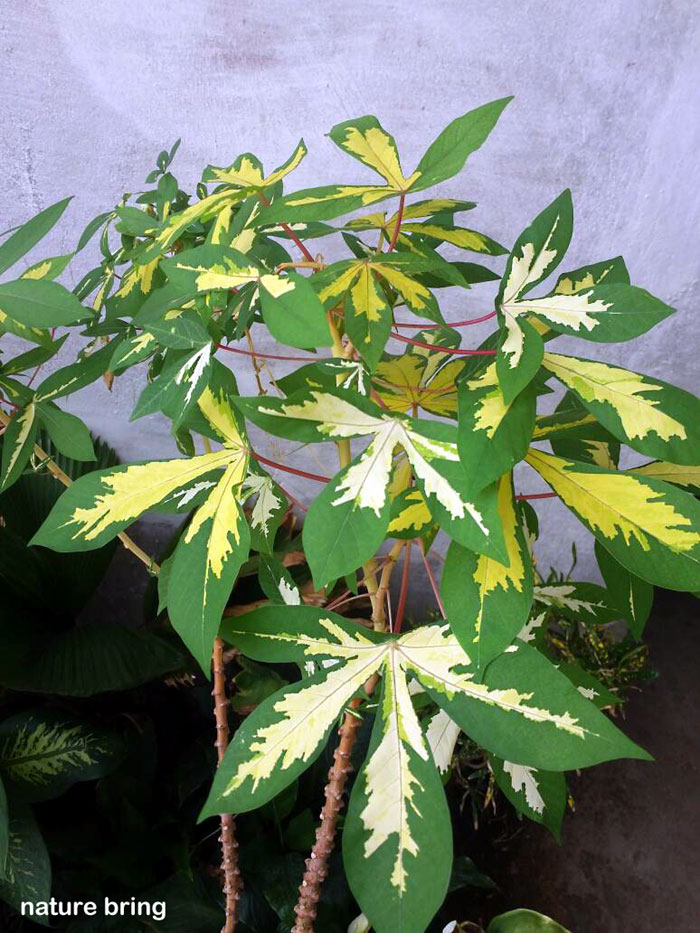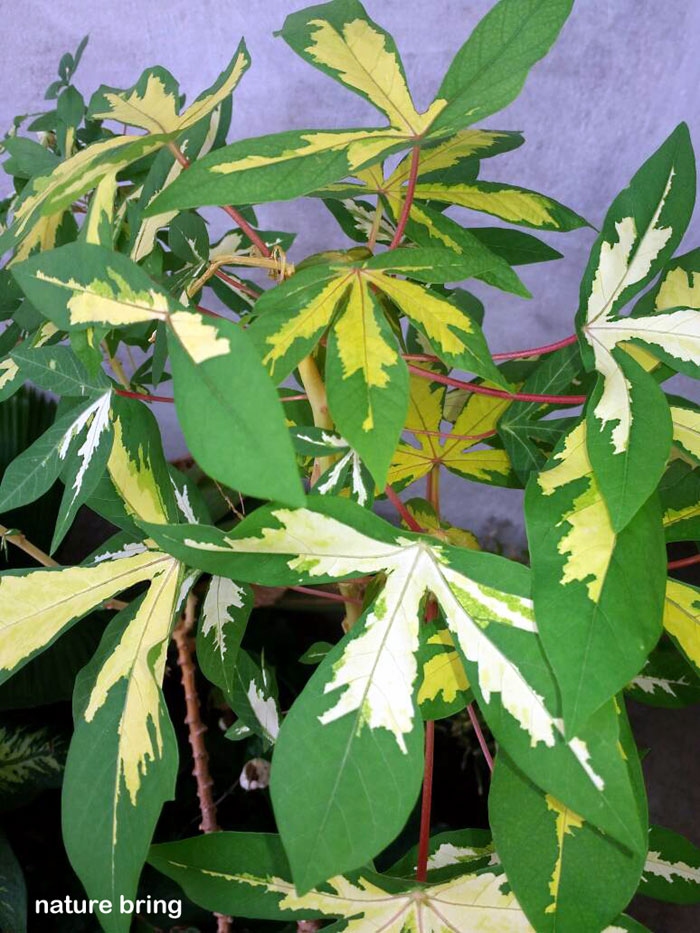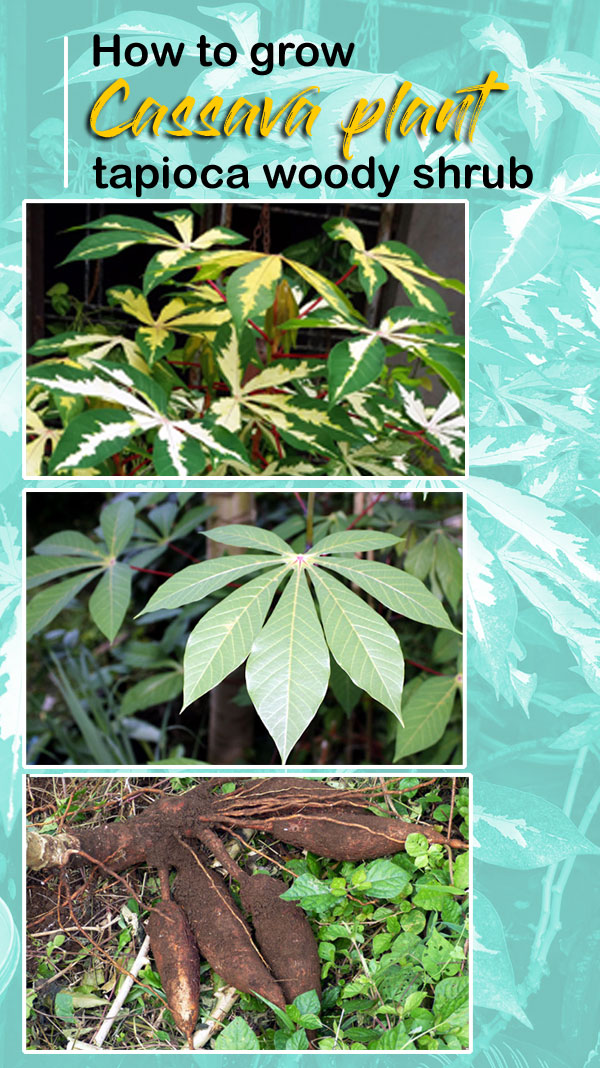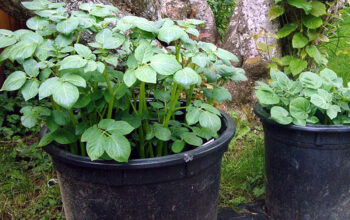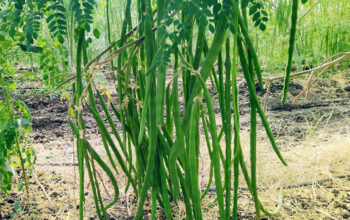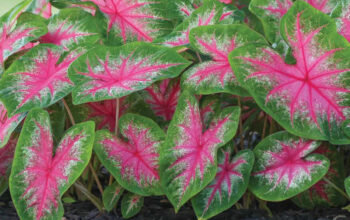Cassava plant (mandioca)
The cassava plant (Tapioca) possesses conspicuous, nearly palmate leaves, which look like those of nearby castor-oil plants but are divided into approximately five to nine lobes. They have fleshy roots like dahlia tubers. Cassava roots have many bulbs, the tubers are used for food after they develop. There are different kinds of herbs, shrubs, and trees, ranging from low herbs to long, un-branched trees. It’s few species of tapioca plants grow in alkaline soils, but others live on mud banks along rivers. This plant is also known by names like manioc, mandioca, brazil arrowroot, yuca, tapioca, etc.
In general, commercial cultivars are 10 to 15 cm long and 5 to 10 centimeters in diameter at the top. There is a woody vascular bundle running along the root’s axis. Depending on the variety, the flesh may be white or yellow. There is a lot of starch in cassava roots, along with calcium, phosphorus, and vitamin C. Unfortunately; they lack protein and other nutrients. On the other hand, its leaves are nutrient-dense (rich in lysine) but lacking in methionine and possibly tryptophan.
In addition to dietary fiber, cassava is a great source of vitamin C, thiamin, folic acid, manganese, and potassium. Cooked cassava leaves are also eaten and are an essential element of numerous broth and stews in the corridor of Central Africa.
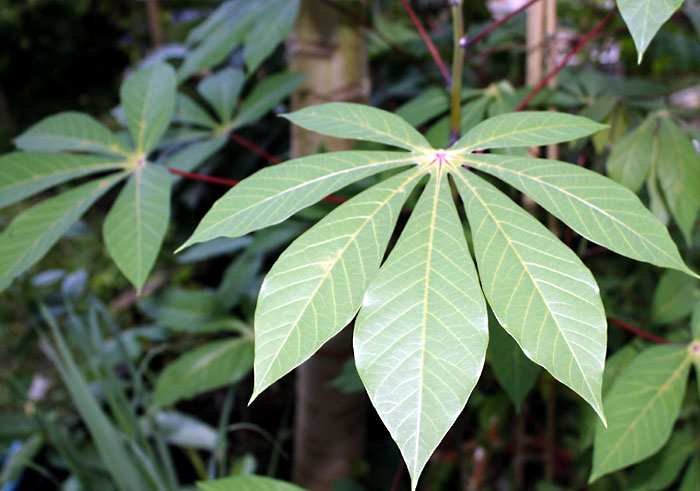
Overview of Cassava plant
Scientific name Manihot esculenta
Common name cassava plant, manioc, mandioca, brazil arrowroot, Yuca, Tapioca, para arrowroot.
Plant type Perennial, a woody shrub.
Sun required Full sun, part shade
Soil loamy, well-drained soils
Soil pH 4.5-6.5
Zone 8-11
How to Plant and Care Cassava
Plant in the beginning or middle of the rainy season. Then you can harvest it in the dry season. In areas with two relatively short rainy seasons per year, cassava can either be planted in the early or middle rainy season.
Typically, cassava takes between 18 to 24 months from planting to harvest. Propagating plants is accomplished by dividing mature stems into propagules. The cuttings measure between 2 and 3 inches (5 and 7.6 cm.) along their length and contain several bud nodes. Prepare the soil in a pot and place the cutting in the sun, lightly misted.
Plantains are often planted after mandioca when considering crop rotation, as they are planted after maize and okra. The rows of Tapioca should be 3-4 feet apart.
Sunlight
The cassava plant thrives in full sun, as you would expect from a tropical plant. It prefers heat and humidity. Cassava plants grow best when exposed to direct sunlight for long periods. Despite this fact, intense direct sunlight can burn their leaves. An environment shady enough to put them at ease is best in these cases.
Water
During the first month following planting, keep the soil moist to help the stems establish themselves. It is possible that the cassava plant isn’t getting enough water if it loses many leaves.
Despite its drought resistance, cassava benefits from good water in order to produce more healthy roots. However, don’t let the soil become too wet as this may cause the roots to rot. Hence, soils with higher water retention capacities and higher water tables are fundamental to optimal cassava production. Be careful not to let the soil become waterlogged.
Soil
This plant can grow in any type of soil, including poorly drained soil. Regardless of the soil makeup, loamy soils containing well-rotted organic matter produce the best results. If the soil is clay or compact, cassava may struggle, but it will still produce enough to harvest.
Providing it is well-drained, cassava can grow in a wide variety of soil types and pH levels. Ideally, however, you should choose a loamy, sandy surface. Under high fertility conditions, top growth may be stimulated to the detriment of root growth.
Fertilizer
It is not necessary to fertilize cassava plants that are planted in soil that provides organic matter. The yield, however, can be greatly improved with appropriate additional fertilization. Add well-rotted manure to your soil during planting, it will provide quality to the plant. Apply a good quality liquid fertilizer or more manure within two months of planting. They require similar fertilization requirements to sweet potatoes. It is important to use fertilizer high in potassium to prevent the growth of elongated, straggly roots. Fill in or drill holes in the soil to allow air to enter, then spray fertilizer 15 to 20 cm from the base of the plant. Consequently, nutrient loss from volatilization and runoff can be reduced.
Temperature
Mandioca needs to be in a climate free of frost year-round in order to produce a healthy crop year-round. A humid-warm climate is the best environment for cassava growing, so temperatures between 25 and 29°C are the best.
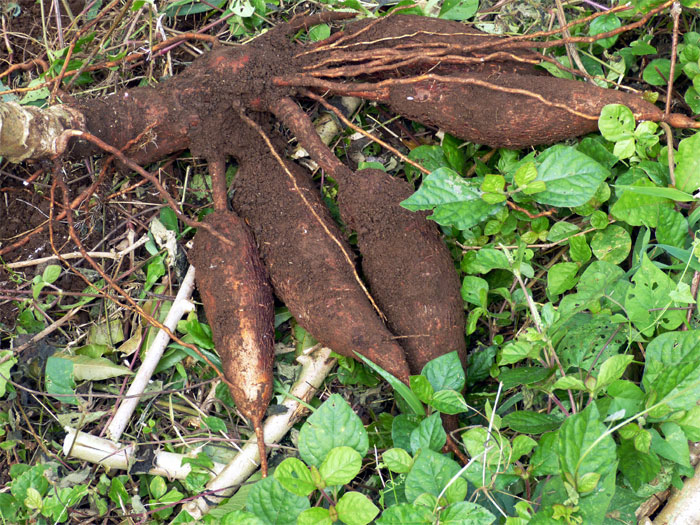
Cassava Roots (Tuber Information)
The main root of the plant is attached to several bulbs, these are tubers and are used for food after developing. But keep in mind they have to be cooked, as raw tubers are poisonous. The tubers can be planted after about 10 months from planting. You can use the tuber by cooking it or roasting it in the fire.
Read also:
How to grow and care for pentas flower. During the mons0on maintain your garden. 09 Different types of palm trees. 12 Best plants grow from cuttings. Growing Cinnamon in containers.
For pin

